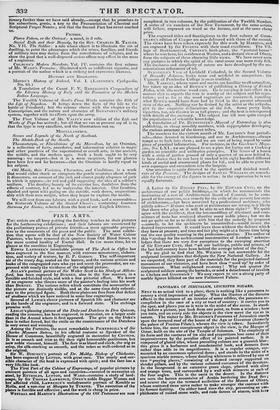A Letter to Sir 11013ERT PEEL, by Sir EDWARD CUST,
on the architecture of our public buildings,—in which he recommends the institution of a sort of Architectural Board of Control, to be com- posed of five amateurs, as a remedy for the evils of the present low state of architecture,—bas been answered by a professional architect ; who pithily asks—" If those who work at architecture are wrong, is it likely that those who play at it will be able to set them right?" We quite agree with the architect, that the intermeddling of dilettanti and com- mittees of taste has rendered abortive many noble plans ; but we do not go quite so far as to think with him that the remedy be proposes —namely, to let the architects be uncontrolled—would insure the desired improvement. It would leave them without the defence which they have at present; and time and fair play might at a future time bring out the one quality wanting in the profession—genius. The author of this "apology for the architectural monstrosities of London" acknow- ledges that there are very few exceptions to the sweeping assertion of Sir EDWARD CUST, that "all our buildings, public and private, of the last half-century have been behind the average talent of the day." We are glad to find that Mr. Witxtris is not answerable for the sculptural incongruities that disfigure the New National Gallery. As we suspected, they form part of the materials for the projected national monument of our victories, and have been thus "used up" by order of Government. What enlightened economy! Why not quarter the sculptured soldiers among the barracks, or send a detachment of invalids to Chelsea and Greenwich ? We may expect to see a strong party of marble figures billeted on the new Parliament Palace.


























 Previous page
Previous page